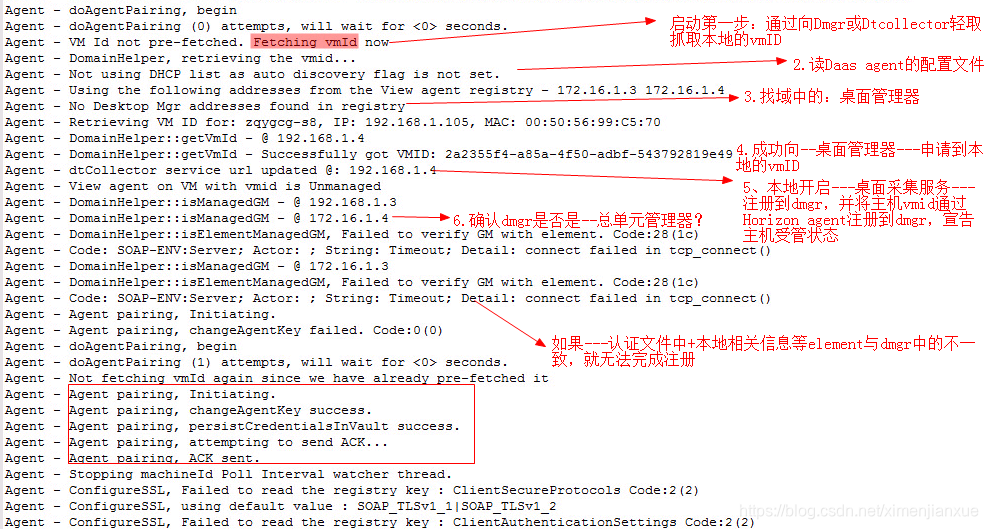Daas云桌面代理与租户管理应用通信过程分析
本文共 321 字,大约阅读时间需要 1 分钟。
Daas 云桌面代理与租户管理应用通信过程分析
本文针对Daas代理日志的详细分析,来理解agent与租户管理应用设备通过的过程。
以下是Daas平台云桌面模板映像制作过程中,其上代理与租户管理服务通信的相关过程日志,特此贴出来,通过对通信过程中日志的扥西,让更多小伙伴清楚agent与租户通信的过程及配对的过程,以更深理解桌面组件之间的通信交互流程,面对通信故障问题时,以气发思路,找准症结,更加快速解决相关故障:
桌面模板中agent与租户通信日志信息如下:













Daas桌面管理平台模板agent状态:active即正常。

附agent的配置文件:

转载地址:http://uawxz.baihongyu.com/
你可能感兴趣的文章